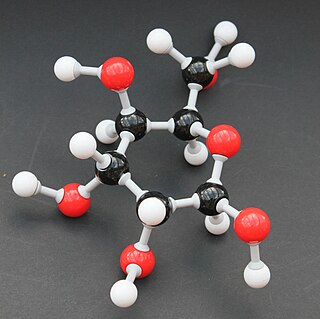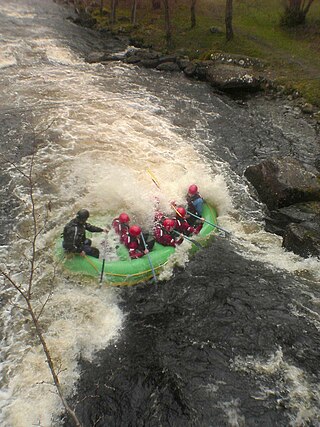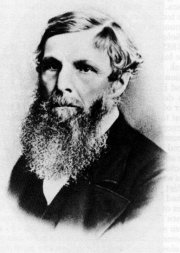This article has multiple issues. Please help improve it or discuss these issues on the talk page . (Learn how and when to remove these template messages)
|


This article has multiple issues. Please help improve it or discuss these issues on the talk page . (Learn how and when to remove these template messages)
|


Many research workers, hydraulics specialists and engineers have used scale models for over a century, in particular in towing tanks. Manned models are small scale models that can carry and be handled by at least one person on an open expanse of water. They must behave just like real ships, giving the shiphandler the same sensations. Physical conditions such as wind, currents, waves, water depths, channels and berths must be reproduced realistically.
Manned models are used for research (e.g. ship behaviour), engineering (e.g. port layout) and for training in shiphandling (e.g. maritime pilots, masters and officers). They are usually at 1:25 scale.
Worldwide, manned model schools have chosen to apply the similitude law of William Froude (1810-1879) for its manned models. This means that gravity is considered to be preponderant over the other forces acting on the hull (viscosity, capillarity, cavitation, compressibility, etc.).
The different aspects of similitude may thus be defined as follows:
Similitude of shape: The model has exactly the same geometric shape as the real ship. This means that all the length (L) dimensions of the real ship are divided by the same factor, the scale factor. The designers of Port Revel chose a scale (S) of 1:25, so:
S(L) = 25 (smaller, hence distance is 25 times less)
In this similitude, the proportions are kept (the ratios between the various dimensions of the ship are identical). This is also the case with the block coefficient. Furthermore, the angles are a length ratio, so they are also identical to the original ones. The scale factors of the areas and volumes are deduced from this, i.e.:
S2(L) = 252 = 625
S3(L) = 253 = 15 625
Similitude of mass (M): The model used for shiphandling training must not only resemble the original but also move in the same way as the original when subjected to similar forces. Consequently, the scale factor for the mass (M) and displacement is the same as that for the volumes, i.e.:
S(M) = S3(L) = 253 = 15 625
Similitude of forces (F): If the external forces on the model are in similitude, like the shapes, masses and inertia, the model's movement will be in similitude. It can thus be shown that the forces (F) must be at the same scale as the masses and weights, so:
S(F) = S(M) = 253 = 15 625
Similitude of speed(V): In agreement with Froude's law, the velocity scale is the square root of the length scale, so:
S(V) = S1/2(L) = sqrt(25) = 5 (times slower than in real life)
Similitude of time (T): Time is a distance (L) over speed (V), so:
S(T) = S(L) / S(V) = S1/2(L) = sqrt(25) = 5 (times faster than in real life)
Similitude of power (P): As the power P = F x V, hence S(P) = S(F) x S(V), so:
S(P) = S3(L) x S1/2(L) = S7/2(L) = 257/2 = 78 125
In conclusion, by choosing a scale of 1:25 for the lengths and by complying with Froude's law, the engineers at Sogreah – Port Revel built models 25 times smaller, operating 5 times more slowly, but as the distances are 25 times less, things occur 5 times faster. The ships are 78 125 times less powerful.
While the models must be in correct similitude, this is not enough. Other factors can affect the correct reproduction of the manoeuvres, such as the field of vision, on-board equipment and wind.
40 years' experience have shown that students quickly learn how to control the models just as they do the real ships that they are used to manoeuvring.
Manned model exercises promote good situational and spatial awareness, a lack of which contributes to most accidents and incidents.
Those who have trained on both claim that scale models are complementary to electronic simulators. While manoeuvres with currents, waves, tugs, anchors, bank effects, etc. are reproduced more accurately on scale models, numerical simulators are more realistic when it comes to the bridge environment.

Wind tunnels are machines in which objects are held stationary inside a tube, and air is blown around it to study the interaction between the object and the moving air. They are used to test the aerodynamic effects of aircraft, rockets, cars, and buildings. Different wind tunnels range in size from less than a foot across, to over 100 feet (30 m), and can have air that moves at speeds from a light breeze to hypersonic velocities.

Ship models or model ships are scale models of ships. They can range in size from 1/6000 scale wargaming miniatures to large vessels capable of holding people.

Naval architecture, or naval engineering, is an engineering discipline incorporating elements of mechanical, electrical, electronic, software and safety engineering as applied to the engineering design process, shipbuilding, maintenance, and operation of marine vessels and structures. Naval architecture involves basic and applied research, design, development, design evaluation (classification) and calculations during all stages of the life of a marine vehicle. Preliminary design of the vessel, its detailed design, construction, trials, operation and maintenance, launching and dry-docking are the main activities involved. Ship design calculations are also required for ships being modified. Naval architecture also involves formulation of safety regulations and damage-control rules and the approval and certification of ship designs to meet statutory and non-statutory requirements.

A model is an informative representation of an object, person or system. The term originally denoted the plans of a building in late 16th-century English, and derived via French and Italian ultimately from Latin modulus, a measure.

A hydraulic jump is a phenomenon in the science of hydraulics which is frequently observed in open channel flow such as rivers and spillways. When liquid at high velocity discharges into a zone of lower velocity, a rather abrupt rise occurs in the liquid surface. The rapidly flowing liquid is abruptly slowed and increases in height, converting some of the flow's initial kinetic energy into an increase in potential energy, with some energy irreversibly lost through turbulence to heat. In an open channel flow, this manifests as the fast flow rapidly slowing and piling up on top of itself similar to how a shockwave forms.

A scale model is a physical model that is geometrically similar to an object. Scale models are generally smaller than large prototypes such as vehicles, buildings, or people; but may be larger than small prototypes such as anatomical structures or subatomic particles. Models built to the same scale as the prototype are called mockups.

A watercraft or waterborne vessel is any vehicle designed for travel across or through water bodies, such as a boat, ship, hovercraft, submersible or submarine.
In continuum mechanics, the Froude number is a dimensionless number defined as the ratio of the flow inertia to the external force field. The Froude number is based on the speed–length ratio which he defined as: where u is the local flow velocity, g is the local gravity field, and L is a characteristic length.

William Froude was an English engineer, hydrodynamicist and naval architect. He was the first to formulate reliable laws for the resistance that water offers to ships and for predicting their stability.

A ship model basin is a basin or tank used to carry out hydrodynamic tests with ship models, for the purpose of designing a new ship, or refining the design of a ship to improve the ship's performance at sea. It can also refer to the organization that owns and operates such a facility.

The TVR S series is a line of sports cars manufactured by the British company TVR between 1986 and 1994. It was announced at the 1986 British International Motor Show. The car went into production in less than 12 months, with 150 pre-manufacture orders placed at the motor show before the moulds were even made.

Similitude is a concept applicable to the testing of engineering models. A model is said to have similitude with the real application if the two share geometric similarity, kinematic similarity and dynamic similarity. Similarity and similitude are interchangeable in this context. The term dynamic similitude is often used as a catch-all because it implies that geometric and kinematic similitude have already been met.

Azipod is a trademarked azimuth thruster pod design, a marine propulsion unit consisting of a fixed pitch propeller mounted on a steerable gondola ("pod") containing the electric motor driving the propeller, allowing ships to be more maneuverable. They were developed in Finland in the late 1980s jointly by Wärtsilä Marine, Strömberg and the Finnish National Board of Navigation.

A motion simulator or motion platform is a mechanism that creates the feelings of being in a real motion environment. In a simulator, the movement is synchronised with a visual display of the outside world (OTW) scene. Motion platforms can provide movement in all of the six degrees of freedom (DOF) that can be experienced by an object that is free to move, such as an aircraft or spacecraft:. These are the three rotational degrees of freedom and three translational or linear degrees of freedom.

HMS Inflexible was a Victorian ironclad battleship carrying her main armament in centrally placed turrets. The ship was constructed in the 1870s for the Royal Navy to oppose the perceived growing threat from the Italian Regia Marina in the Mediterranean.

The Tatra 148 was a truck produced in Czechoslovakia by the Tatra company.

The Port Revel Shiphandling Training Centre is a French maritime pilotage school that trains pilots, masters, and officers on large ships like supertankers, container ships, LNG carriers and cruise ships. The facility uses manned models at a 1:25 scale on a man-made lake designed to simulate natural conditions including harbours, canals, and open seas. It was the first such facility in the world. The Centre was created in 1967 near Grenoble, France, by Laboratoire Dauphinois d'Hydraulique.

In fluid dynamics, the Reynolds number is a dimensionless quantity that helps predict fluid flow patterns in different situations by measuring the ratio between inertial and viscous forces. At low Reynolds numbers, flows tend to be dominated by laminar (sheet-like) flow, while at high Reynolds numbers, flows tend to be turbulent. The turbulence results from differences in the fluid's speed and direction, which may sometimes intersect or even move counter to the overall direction of the flow. These eddy currents begin to churn the flow, using up energy in the process, which for liquids increases the chances of cavitation.
Herakles was a pusher vessel owned by Finnish towing and marine salvage company Alfons Håkans Oy Ab. The ship, originally built as salvage tug Into in 1967, was converted to a pusher in 1991 to be chartered to Rautaruukki Oyj and later ESL Shipping Ltd as the third pusher vessel for the Finnpusku system, a Finnish integrated tug and barge system built in the mid-80s.

Geotechnical centrifuge modeling is a technique for testing physical scale models of geotechnical engineering systems such as natural and man-made slopes and earth retaining structures and building or bridge foundations.